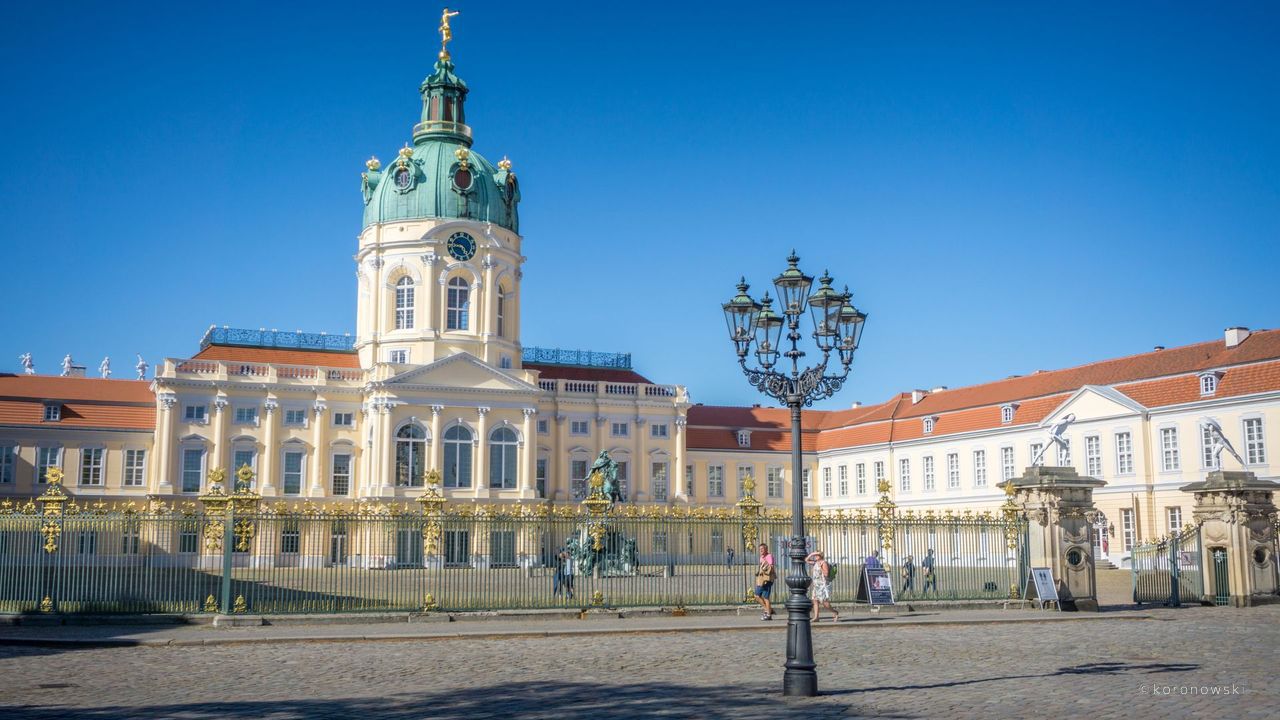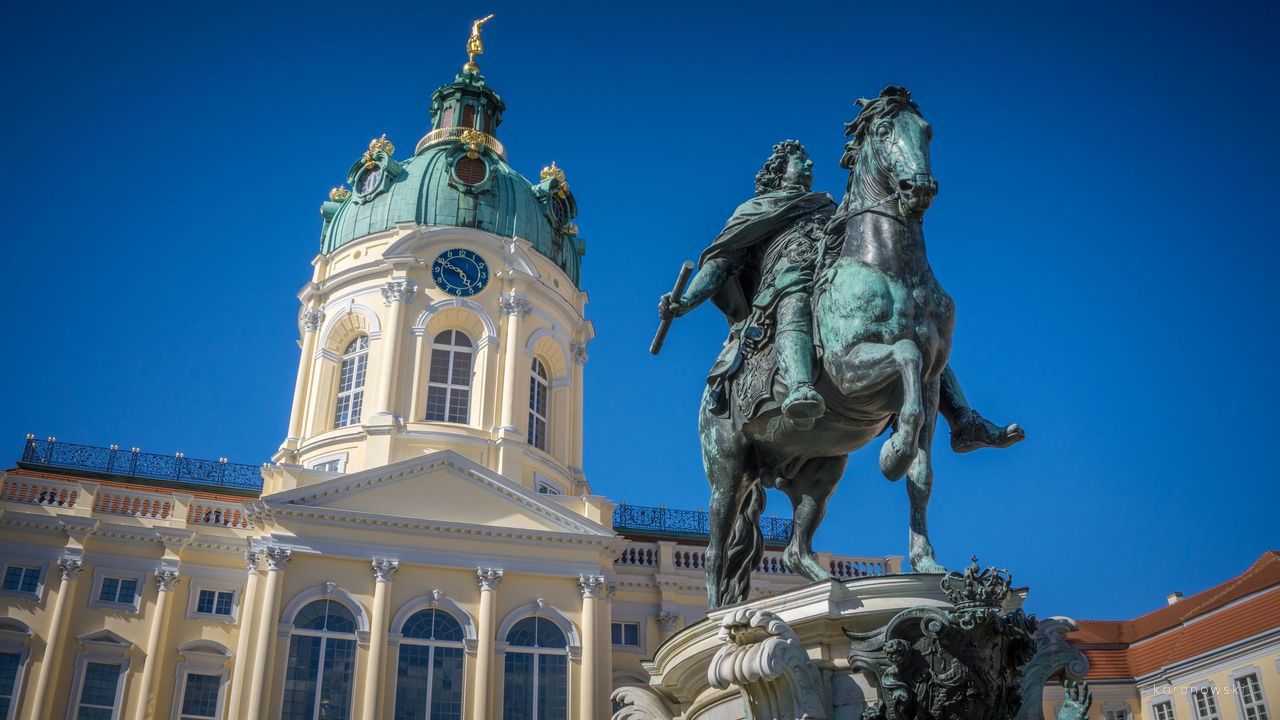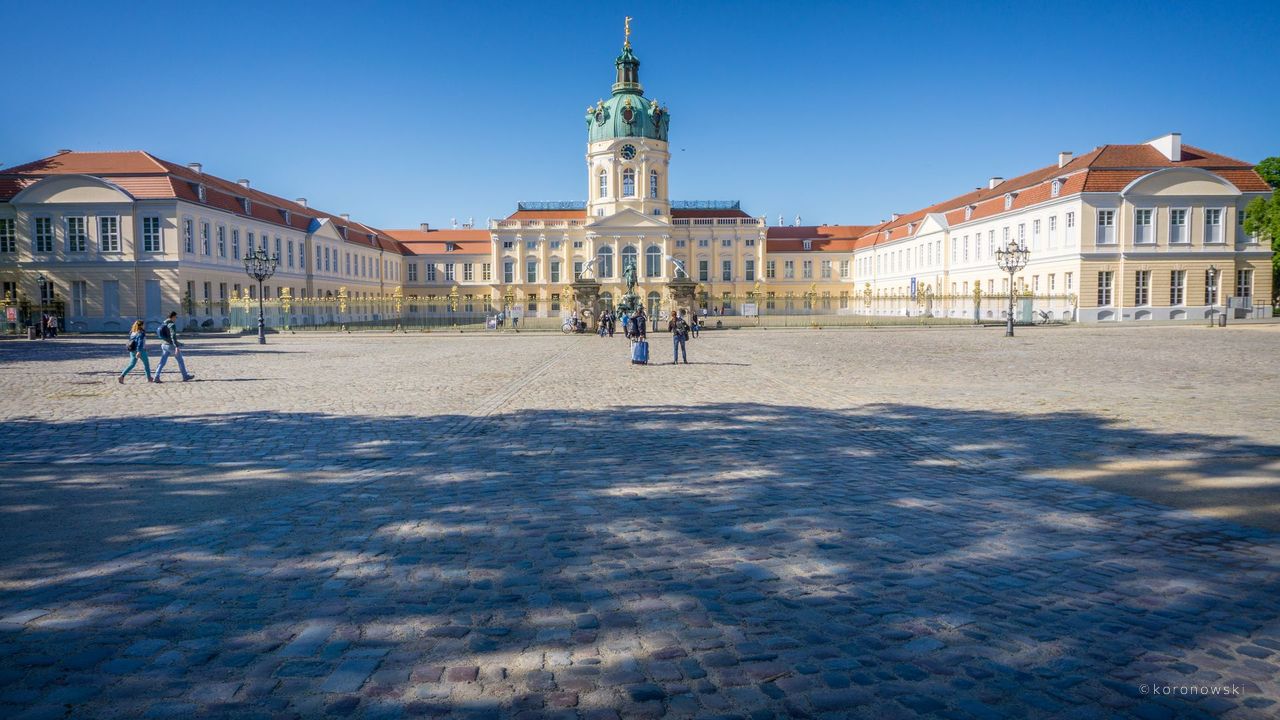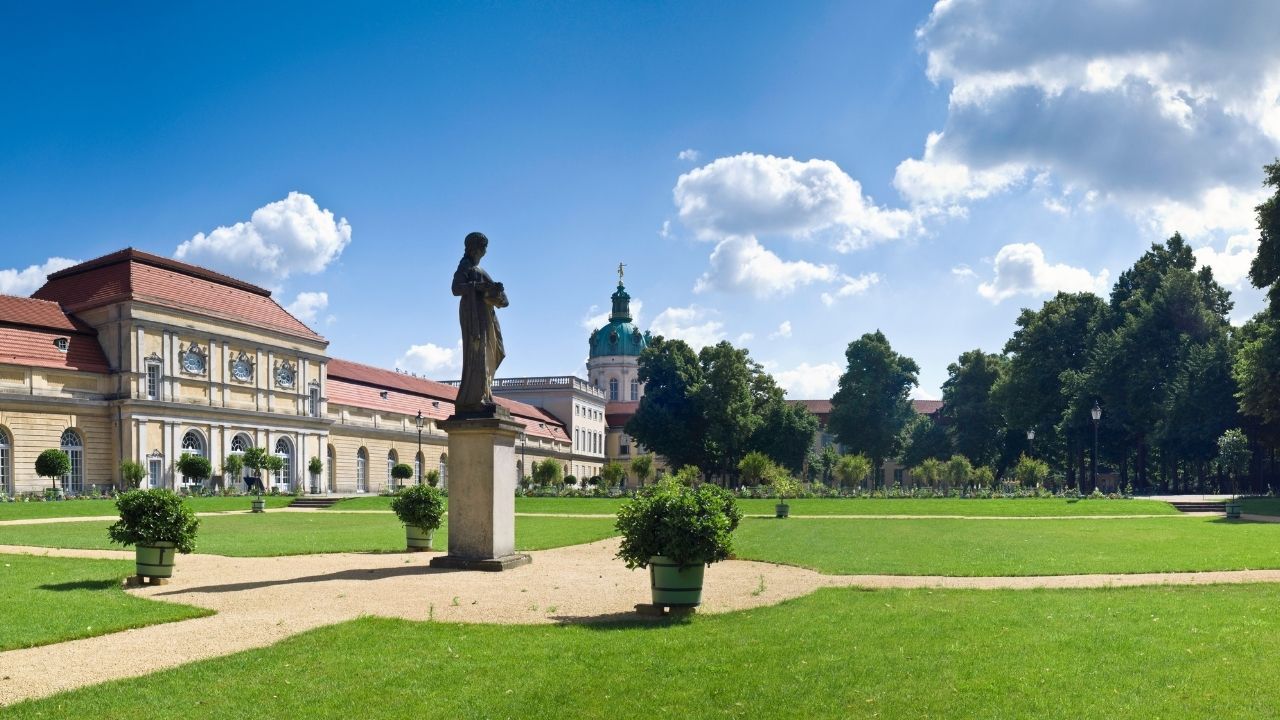Parks & Palaces
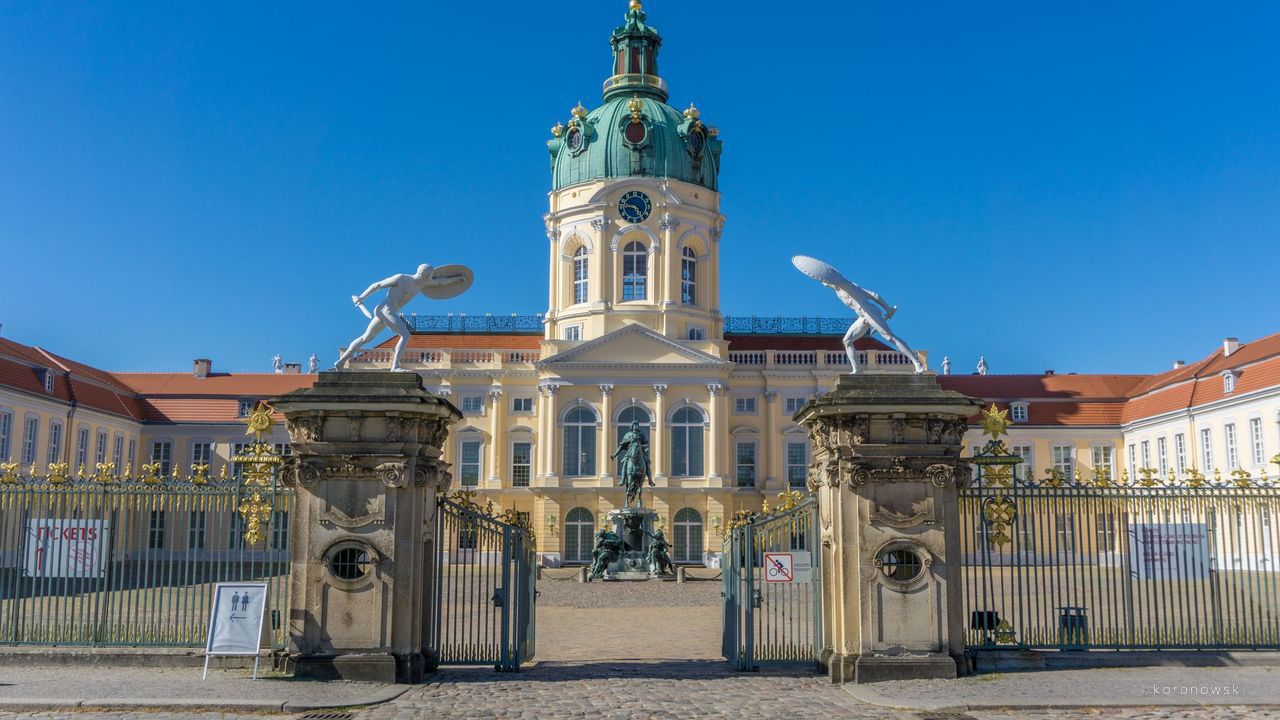
Hohenzollern Residence in Berlin - Charlottenburg Palace
Charlottenburg Palace is the largest former Hohenzollern residence in Berlin.
Step into history at Charlottenburg Palace, where royal splendor meets Berlin's cultural heritage.
The 55 hectare palace garden (popularly known as the "Schlosspark") is now used by the Charlottenburgers as a local recreation area. Today the palace is a museum. For an entrance fee, parts of the interior of the palace are accessible to visitors, including the Old Palace and the New Wing. The exhibition includes baroque parade chambers, porcelain cabinet, ancestor gallery and palace chapel. The building also houses the Museum of Prehistory and Early History, the Romantic Gallery and the Plaster Workshop.
The Mausoleum, the Belvedere and the New Pavilion are also open to visitors. The mausoleum contains the tombs and monuments of members of the Hohenzollern family. Below, you can learn more about the interesting history of Charlottenburg palace and its former inhabitants.
Charlottenburg Palace in Berlin
Location & Sights nearby
Charlottenburg Palace is located in the district of the same name in western Berlin. Opposite the palace, you can visit four other small museums and collections. For example, the Museum Berggruen, in which several works of Picasso are exhibited, or the antique plastic collection. The Kleine Orangerie restaurant next to the palace has a sunny atrium and outdoor seating for pleasant weather, and offers a quiet place to eat. Classical music concerts are also held in the larger sister building, the Great Orangery, from April to October.
Brief history of the Charlottenburg Palace
1695 - 1699 Sophie Charlotte, wife of Elector Friedrich III, had a pleasure palace built according to the design of the architect Johann Arnold Nering. In 1694 Sophie Charlotte of Hanover gave her husband Elector Friedrich III back her country estate on Caputh near Berlin. In return she received the village of Lietze/Lützow, which was about seven kilometres from Berlin, and a plot of land on 30 June 1695. Work on a summer residence was to begin immediately and planning was entrusted to the architect Johann Arnold Nering. Unfortunately Nering died a few months later and Martin Grünberg took over the further construction work. The building was still small. Sophie Charlotte loved the opera and a small, detached opera house was built for it. The palace was also called Sophie Charlotte's "Musenhof" and inaugurated on 11 June 1699 and used by her as a residence. The palace got the name of the nearby village "Lietzenburg".
On the occasion of Frederick's coronation as the first Prussian king in 1701, the palace was extended to a stately complex with a courtyard of honour. After the early death of the Prussian queen, who died at the age of 36, the palace was renamed "Charlottenburg" in her honour. The king commissioned a further extension of the palace. In addition, there was an orangery and a chapel. In the large orangery, rare plants spent the winter. During the summer months, the Orangery was the scene of courtly festivities, while the Baroque garden was adorned with over 500 orange, lemon and bitter orange trees.
After the death of Frederick I in 1713, the palace went to his successor Frederick William I, who did not have much left for the palace. Fortunately, he did not let it wither away completely. He already arranged the necessary maintenance measures. The freestanding opera house was demolished with his permission and used by the citizens for the construction of a school.
In 1740, after the death of Friedrich Wilhelm, the new King Friedrich II (later called "The Great" or "Old Fritz") settled in his new residence. He felt very attracted to this place because his grandmother Sophie Charlotte had worked there. Apparently, the place didn't give him the peace and satisfaction he wanted, and so he started in 1744 in Potsdam with the reconstruction of the city palace to a permanent residence and the construction of the palace Sanssouci as a summer residence. He used Charlottenburg Palace, which was completed in 1747, for family celebrations.
The palace owes its present form to Friedrich Wilhelm II. He also played an important role in German theatre. From 1795 there were free theatre tickets for bourgeois people. Considerable progress in the time at that time.
Furthermore, the royal couple Friedrich Wilhelm III. and Luise lived with their children in the palace. The widowed king lived then 1824 after his marriage with Auguste von Harrach and had a second dwelling prepared for this and for himself, the new pavilion. A contemporary travel guide describes the room layout of the royal family in the palace at that time as follows: "The king lives in the palace throughout the summer and has his rooms in the new one, the Crown Prince, the Crown Princess and the other princes and princesses, in the old palace.
Address, opening hours ...
Address: Spandauer Damm 10-22, 14059 Berlin
Opening times: Tue-Sun 10 AM - 6 PM, Monday closed
Connection: Bus 309, M45 (station: Schloss Charlottenburg / Luisenplatz/Schloss Charlottenburg)
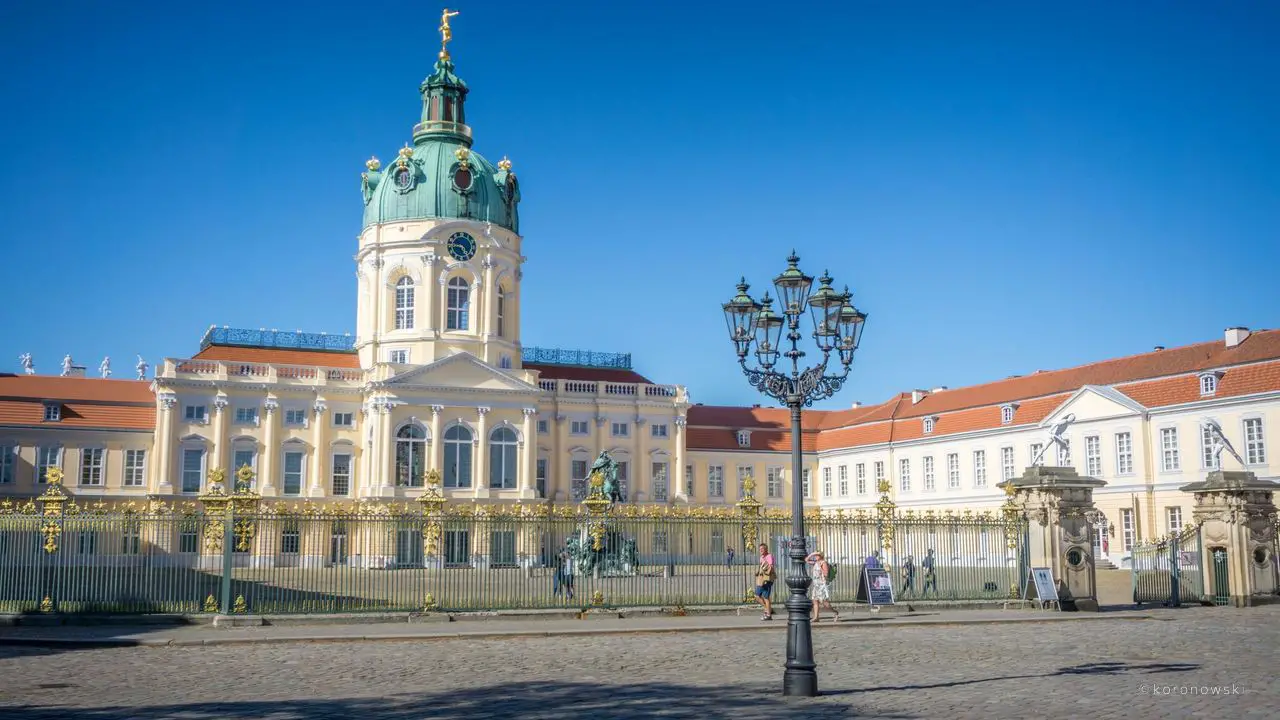
Weather
At a glance
Impressions
All offers at a glance.
With the best tips for Berlin at Welcome to Berlin


